How to Make Pickled Grape Leaves with Lacto-Fermentation
Learn how to safely forage for wild grape leaves to make your own delicious pickled grape leaves with lacto-fermentation.
— Permacrafters gets commissions for purchases made through links in this post. We encourage you to prioritize secondhand goods whenever possible. —
One of my favorite late spring/early summer treats is pickled grape leaves. This tangy, earthy wild vegetable is nutritious, delicious, and fun to make. The fermented leaves can be used to make dishes like stuffed grape leaves, or they can simply be eaten as a side dish like pickles or sauerkraut. Grape leaves are a good source of nutrients, including vitamins C, E, A, K and B6, plus niacin, iron, fiber, riboflavin, folate, calcium, magnesium, copper and manganese. A single serving has no fat or cholesterol, and is very low in sodium and sugar. And through the lacto-fermentation process, they are loaded with healthy probiotics!
Foraging for wild grape leaves accomplishes several positive goals. It gets you into the outdoors, which in itself reduces stress and affords you some needed Vitamin D. It puts you more in touch with nature, which can also help to deepen your relationships with yourself and other people. And… it’s free! So let’s take a deeper look at making pickled grape leaves. Keep in mind, this is a “folk” method that isn’t overly concerned with specific measurements. The best approach is experimentation to see what works for you.
Identification
First, how do you identify wild grape leaves? There are literally dozens of species in the Vitis (wild grape) genus, but fortunately most of them have similar leaf shape. The leaves are alternate (one leaf per node), usually 2 to 5 inches long, wide, and have serrated edges. The leaf veins radiate out like fingers on a hand from the point on the leaf where it attaches to the stem. Leaves may or may not be lobed, but if lobed they usually have three parts. Although specific leaf shapes and characteristics vary among species, wild grape leaves are generally maple-leaf or heart shaped.
In late spring, the vine will have numerous curling tendrils along its length, which reach out to grab branches or surrounding plants for support. As the vine gets older and more mature, the bark will become shredded and will easily pull off.
As with any wild foraged plant, proper identification of wild grape is essential. Fortunately, there are few lookalike species, and fewer still that are dangerously toxic, but it’s still important to know what you harvest. There are a few similar-looking species that bear dark berries to be aware of, and at least one of them is highly toxic. Make sure to avoid Virginia Creeper, Boston ivy, and the Canadian Moonseed. Before going foraging, use our helpful Wild Grape Identification Checklist and learn more about its toxic lookalikes.
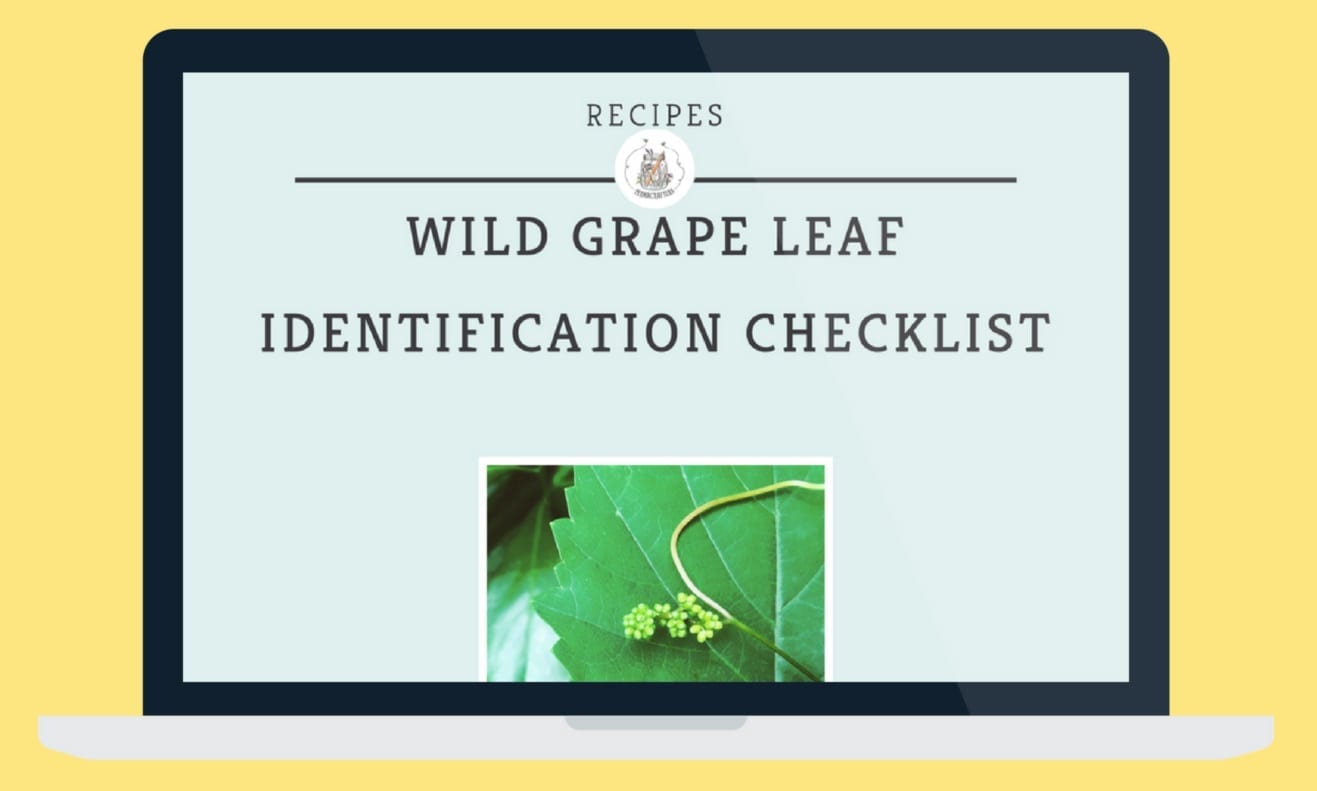
Need some help to identify wild grape leaves?
We created this handy plant identification checklist just for you to bring along on your next foraging adventure! Learn more about wild grape leaves’ toxic look alikes.
Harvesting & Processing
In my area, one of the more common species of wild grape is Vitis rotundifolia, or wild muscadine. This dark, sweet grape is a favorite for making wines in the south. The leaves are on the smaller end of the grape spectrum, but also remain fairly tender until deep into the summer. These are the leaves I usually harvest.
Wild grapes can be found wherever they have at least partial sunlight. You can find them along roadsides, fence rows, forest edges and along river banks. They are also sometimes found in hardwood forests, growing up along with the trees after logging, fire, or a windfall. They need adequate soil moisture, so partially sunny woodlands along streams or in wetlands are prime territory for them.
Here are the ingredients, materials and instructions to make pickled grape leaves via lacto-fermentation:
Ingredients & Materials:
- Harvesting bowl or basket
- Wide-mouth pint-size canning jar
- 100+ wild grape leaves
- Sea salt
- Distilled water
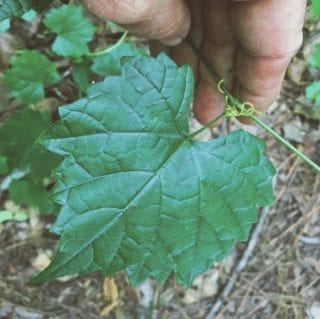
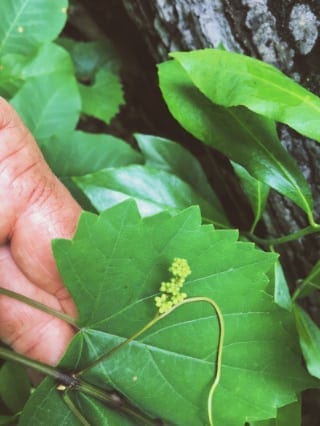
Instructions:
Step 1: Harvest & Rinse
When harvesting the leaves, it’s best to separate the petiole (leaf stem) from the vine, then later clip the petiole from the leaf. In this way, there is less risk of tearing the leaf. I usually gather a large bowlful of leaves, taking care to avoid leaves with holes and ones that are heavily soiled. I then lightly rinse the leaves to remove any loose dust and dirt, but don’t scrub them. You don’t want to wash away the good lactobacilli bacteria necessary for lacto-fermentation to occur.
Step 2: Salt & Massage
The fermentation process is similar to sauerkraut, kimchi, or other fermented vegetables. With thicker leaves like cabbage, the process involves heavily bruising the leaves by pounding. But with the much more tender grape leaves, I simply sprinkle a liberal tablespoon of sea salt over the leaves and then lightly massage them. Don’t crush the leaves, just gently toss and massage the salted leaves until they seem to become more limp. This action is usually enough to break down the cell walls so the lacto-fermentation can begin.
Step 3: Grape Leaf Rolls
Then, stack 10-15 wild grape leaves together in the same direction, roll them up into a loose roll, and tie off with a short section of grapevine. Keep doing this process until you have enough rolls to snugly fill a wide-mouthed canning jar.
Step 4: Submerge in Brine
Then, fill the jar with a brine solution of distilled water and sea salt. You want the brine to be strong enough to taste decidedly salty, but not offensively so. Fill the jars with the brine until all parts of the leaves are covered. Often, placing a “cap” leaf on top of the rolls can help keep them submerged. Then, set the jar aside out of direct sunlight, and wait for the magic to begin!
Step 5: Fermentation
Over the next few days, the salt will prevent any harmful bacteria from growing. But the hardy lactobacilli will survive, and will begin to ferment the leaves. You don’t have to add anything; lactobacilli are ubiquitous in nature, and the leaves come naturally covered with enough for lacto-fermentation to take place. Check the lid of your jar each day, when you can no longer press down on the lid without it going down, then OPEN it to release pressure, then close it again – but make sure that the leaves stay submerged in brine solution. If the leaves seem to swell so that they are no longer submerged, simply add a little more brine.
Step 6: Enjoy or Refrigerate
After a few days (depending on temperature and other factors), your wild grape leaves will be tangy and soft, with a delicious flavor. When they have reached a satisfactory level of fermentation (usually 3-5 days), the jar can be placed in the fridge, where the cold will stop the lacto-fermentation process. You can now enjoy your pickled grape leaves: a delicious, wild foraged treat!
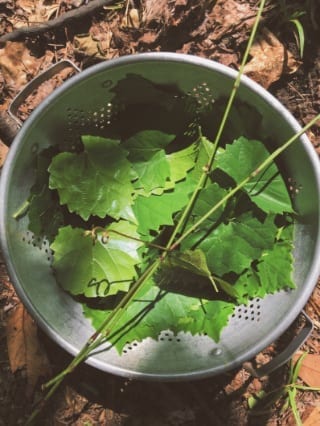
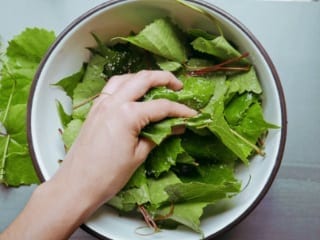
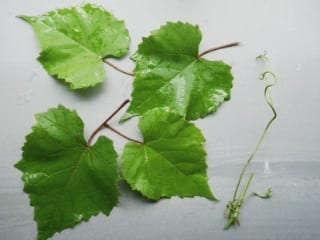
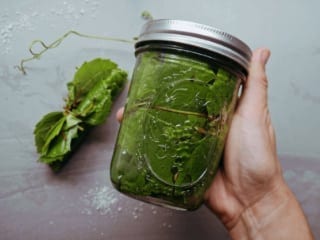
Why “Wild” Fermentation?
As I’ve already mentioned, fermenting vegetables with wild lactobacilli (lacto-fermentation) is healthy and delicious. Where yeast fermentation results in the creation of alcohol, fermenting with wild lactobacilli creates lactic acid. This lowers the food’s pH, making it tangy, as well as breaking down tough cell walls for better digestion.
In addition, it’s important to note that humans have always had a deep relationship with lactobacilli. Billions of these bacteria live in our gut, helping us to break down food. They also help to reduce blood cholesterol, help to prevent diarrhea, help prevent vaginal infections, help to promote weight loss, reduce cold, flu, and allergy symptoms, and help to prevent unhealthy bacteria from colonizing in our gut. On a more esoteric level, when you consume lactobacilli from the land around you, you literally become a deeper part of the community, as you play host to your local strains. There are over 200 species of lactobacilli, and each of them can behave slightly differently in the fermentation process. That’s why it’s so much fun to experiment! The more of these bacterial allies we consume in the food we eat, the better our overall health.
I hope you’ll experiment with fermenting wild grape leaves soon. Admittedly, foraging for wild foods can be a bit daunting at first. There’s no shame in learning from others with more experience – in fact, that’s the best possible way to learn. Books and websites can be a great help, but nothing beats hands-on experiential learning. Many locations have nature education centers, organized plant walks, ancestral skills or bushcraft gatherings, or more specialized wild food groups. Be sure to search Facebook or other social networking sites for groups or individuals in your area who might be able to get you started. If you happen to live close to western NC, a wonderful wild plant and foraging guide who I can heartily recommend is Becky Beyer. Becky’s blog outlines many of the traditional and folkloric uses of plants native to the Appalachian region. In addition, she works as a guide at No Taste Like Home, an ecotour company and educational organization specializing in wild food foraging. Check out her class schedule here.
Will you give this pickled grape leaves recipe a try? Comment below!
Good luck, and enjoy those delicious grape leaves!
Craig
P.S. If you enjoyed this foraged recipe, you may enjoy learning how to make pickled grape leaves with lacto-fermentation or how to make nut milk with hickory nuts.
Craig Richardson
Author

Craig grew up in the forests and along the creeks of eastern North Carolina, where he gained a love for all things natural. He now resides in the rolling hills of the NC Piedmont and spends as much time in the mountains as possible. His passions are natural living, foraging for edible and medicinal plants and fungi, and spending time in the outdoors with his family.
By commenting you accept our Privacy Policy.
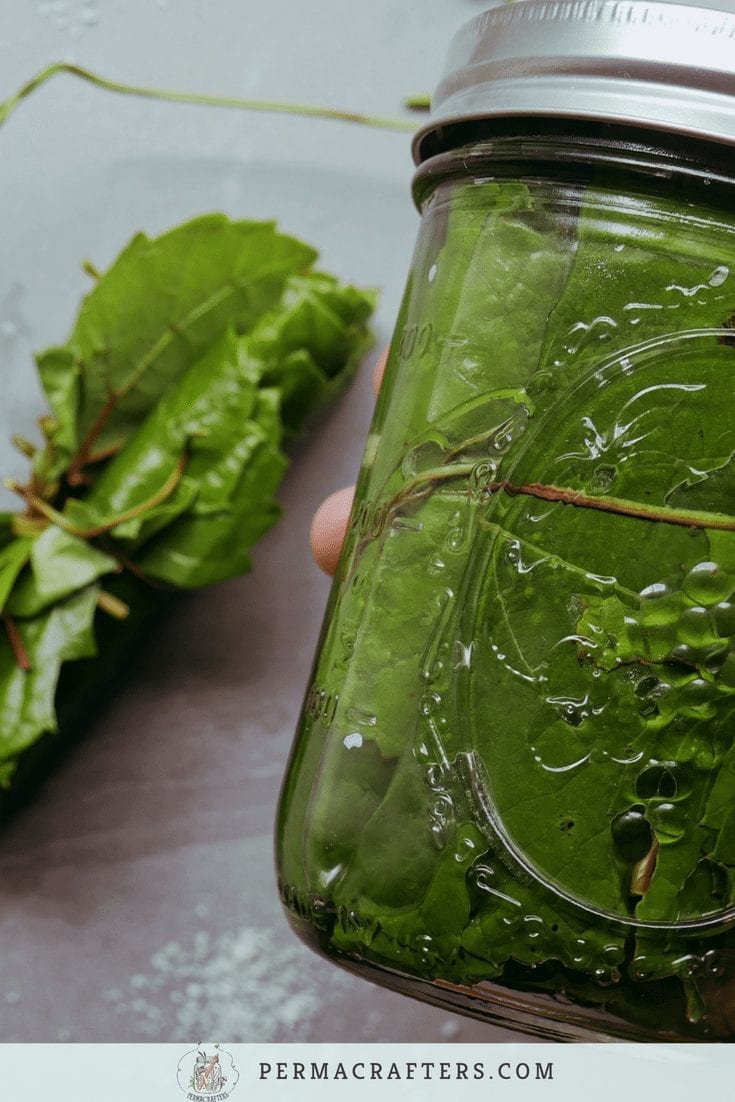
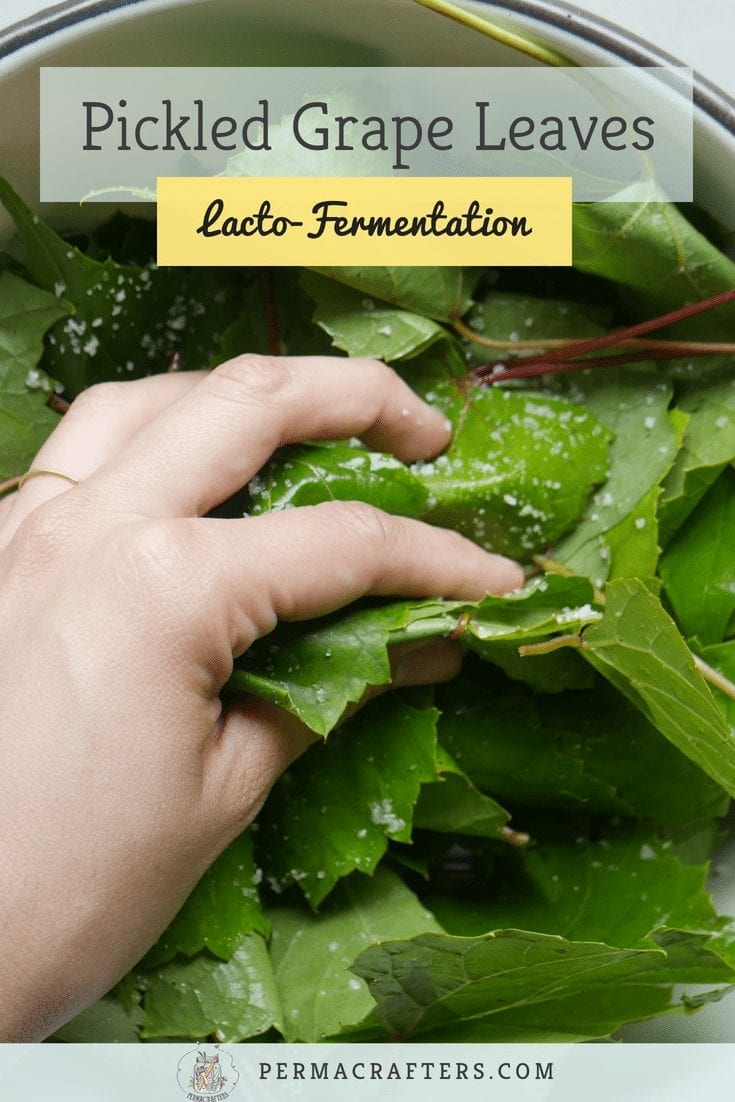
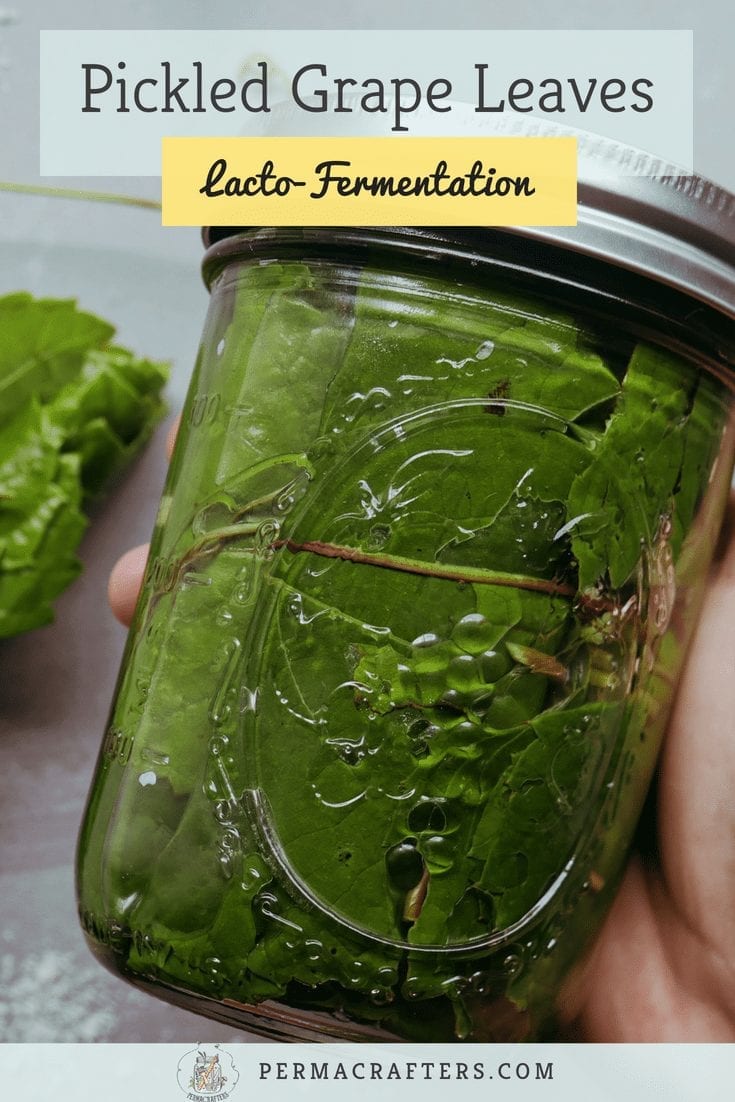
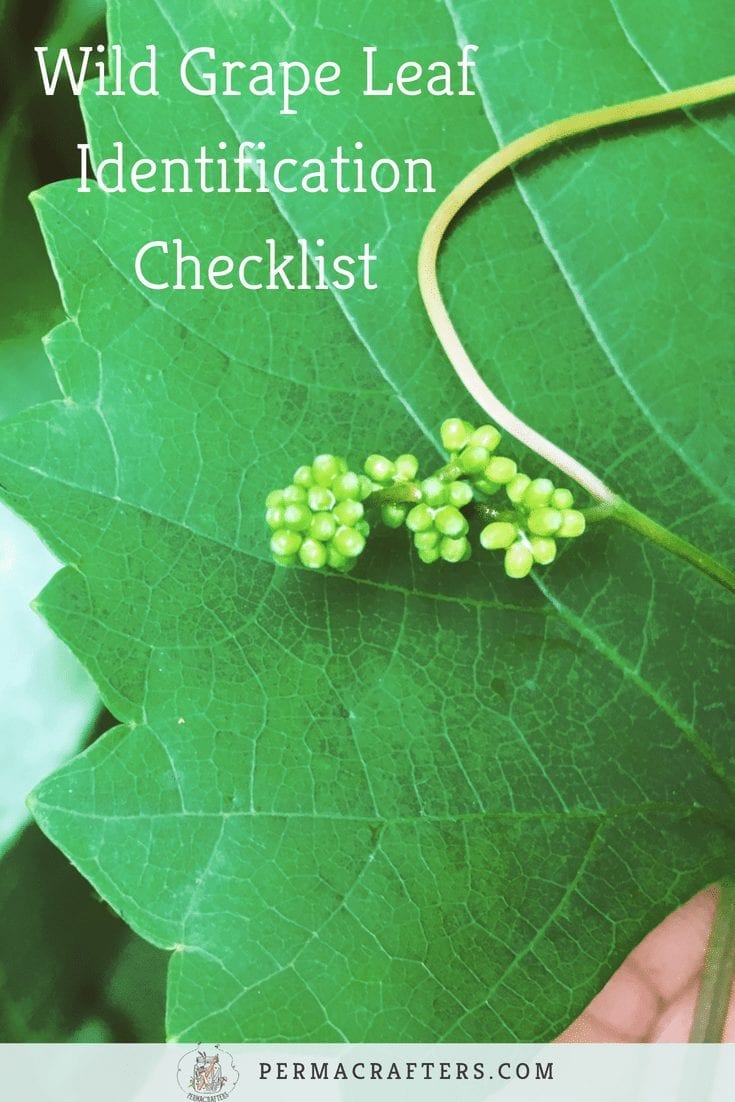
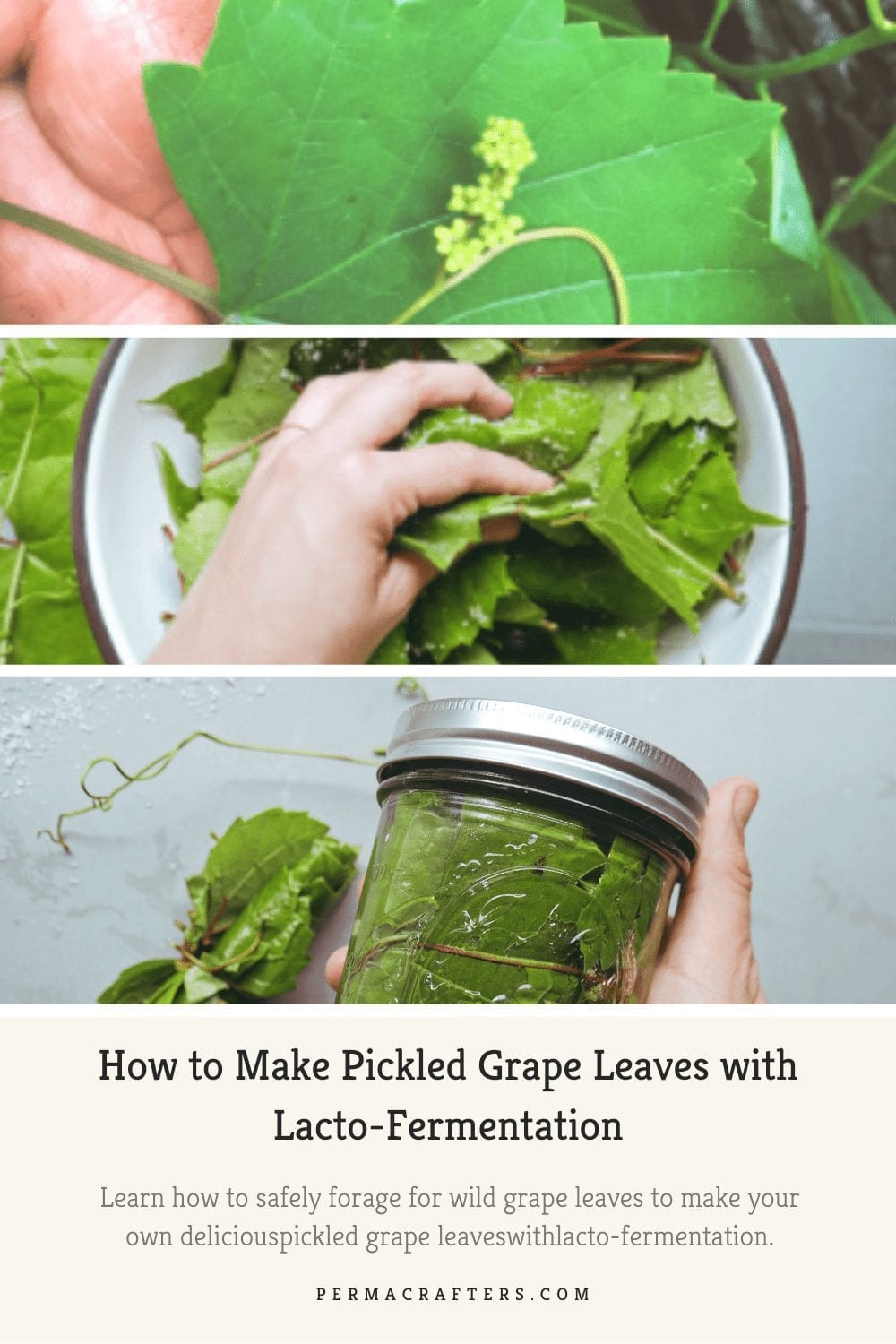
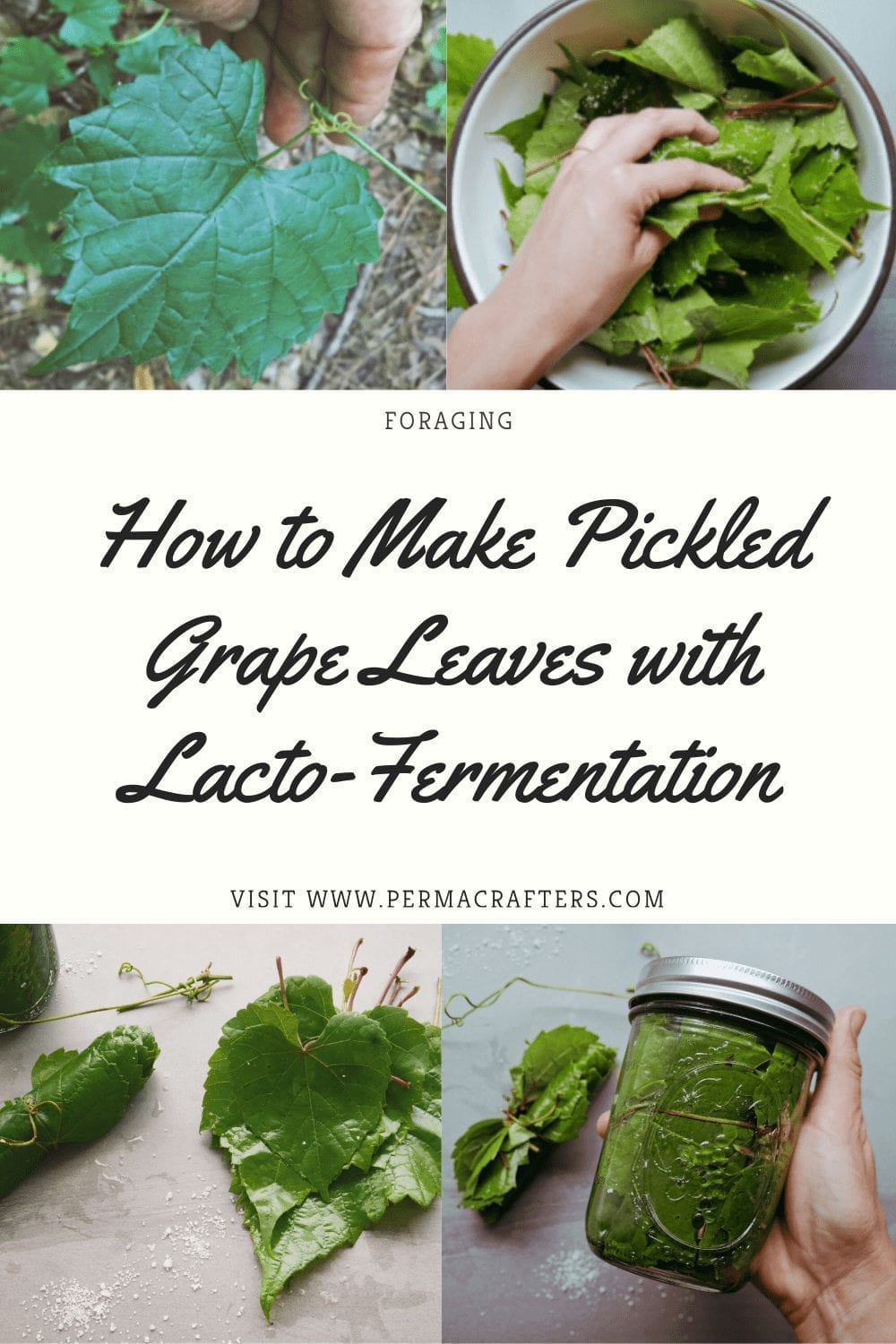
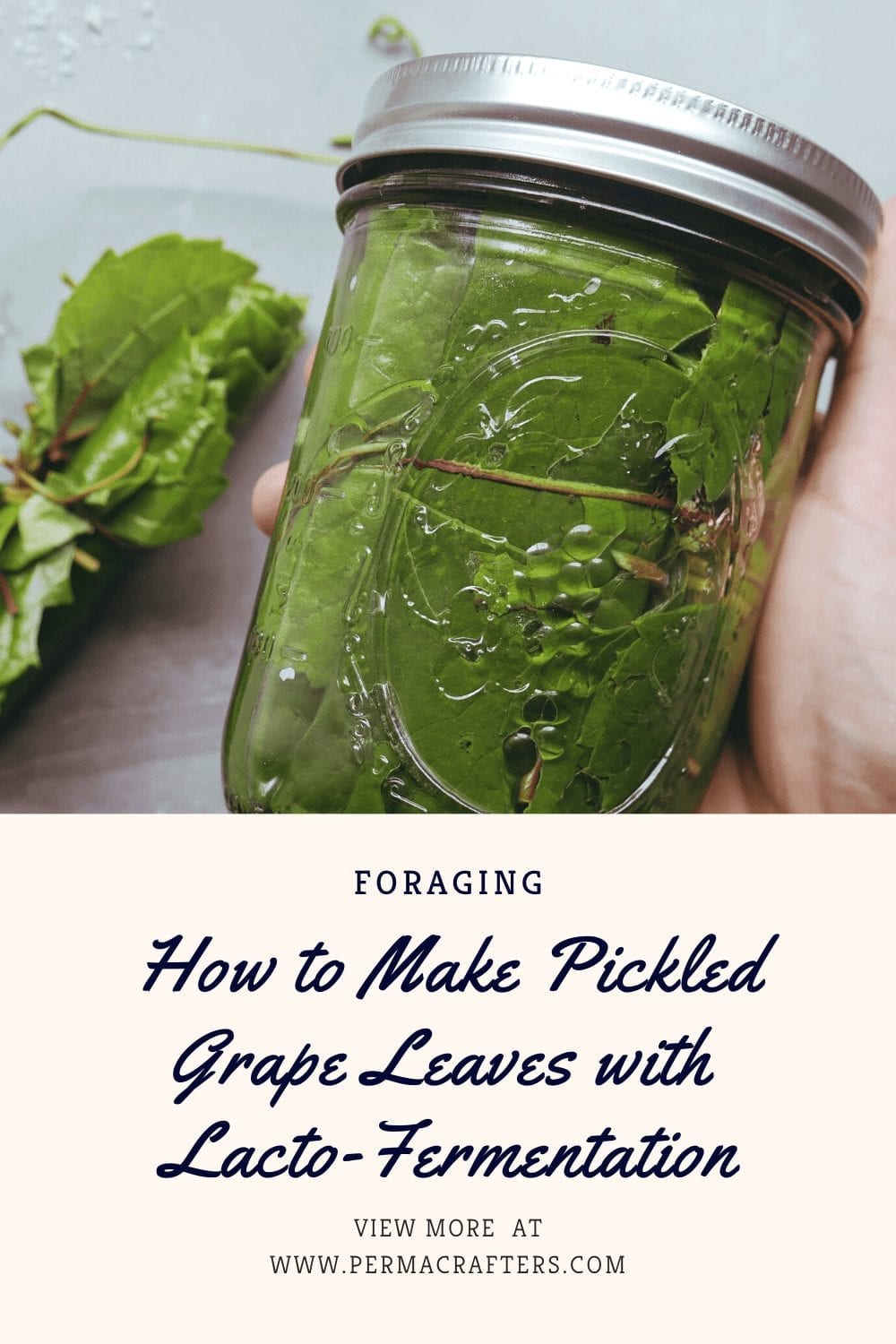
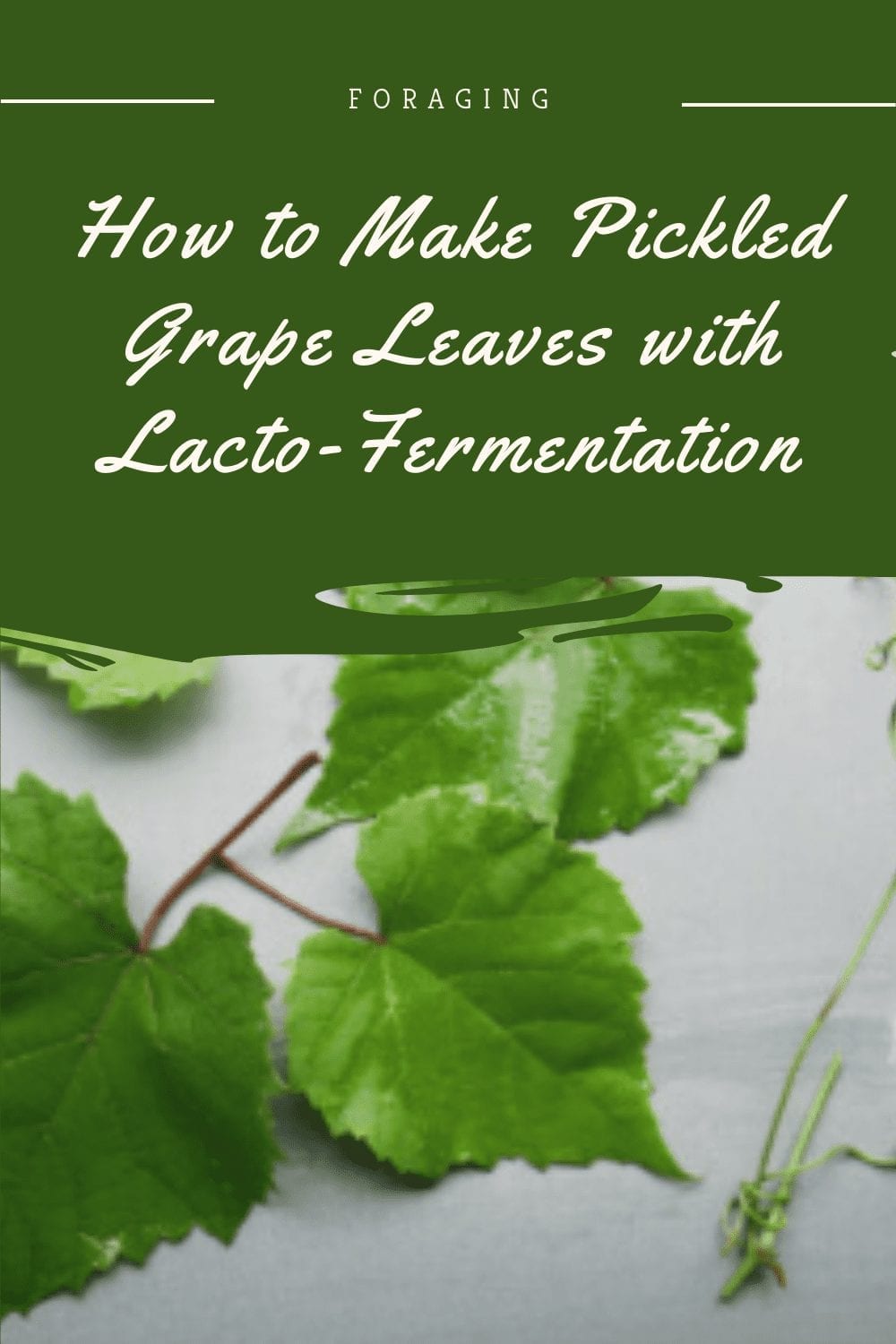
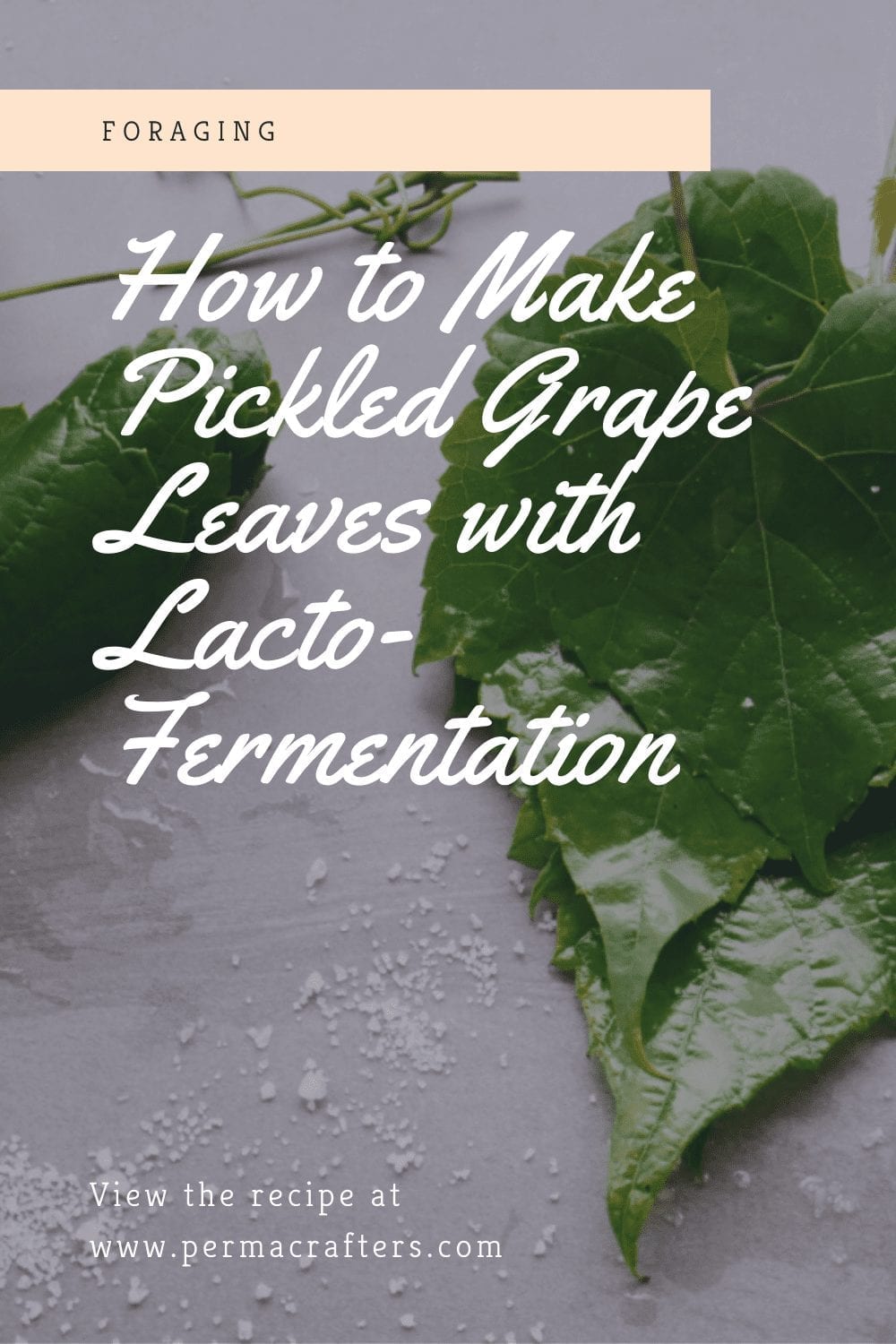
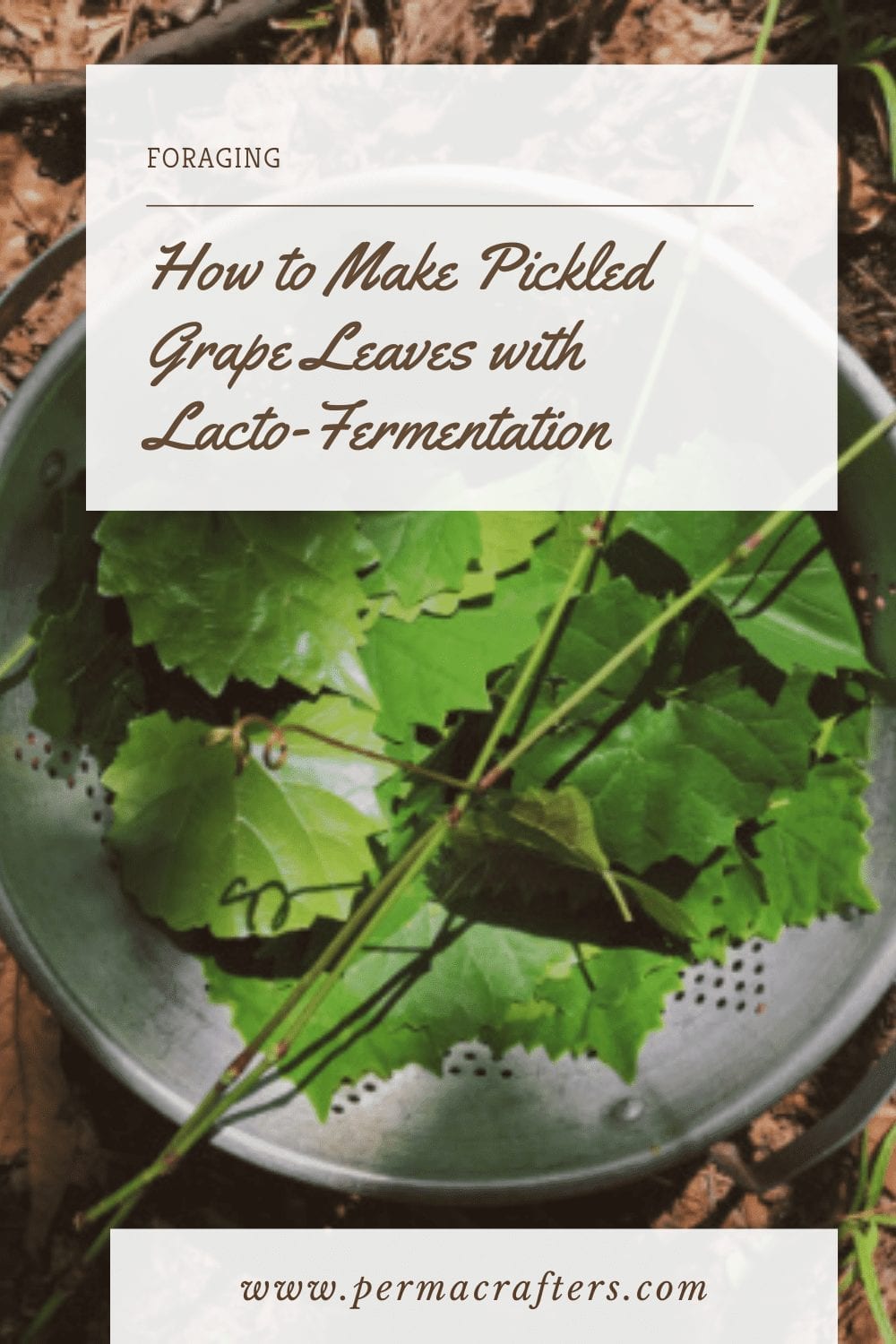
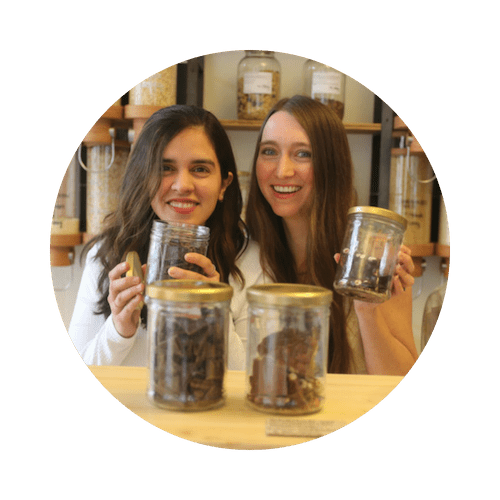
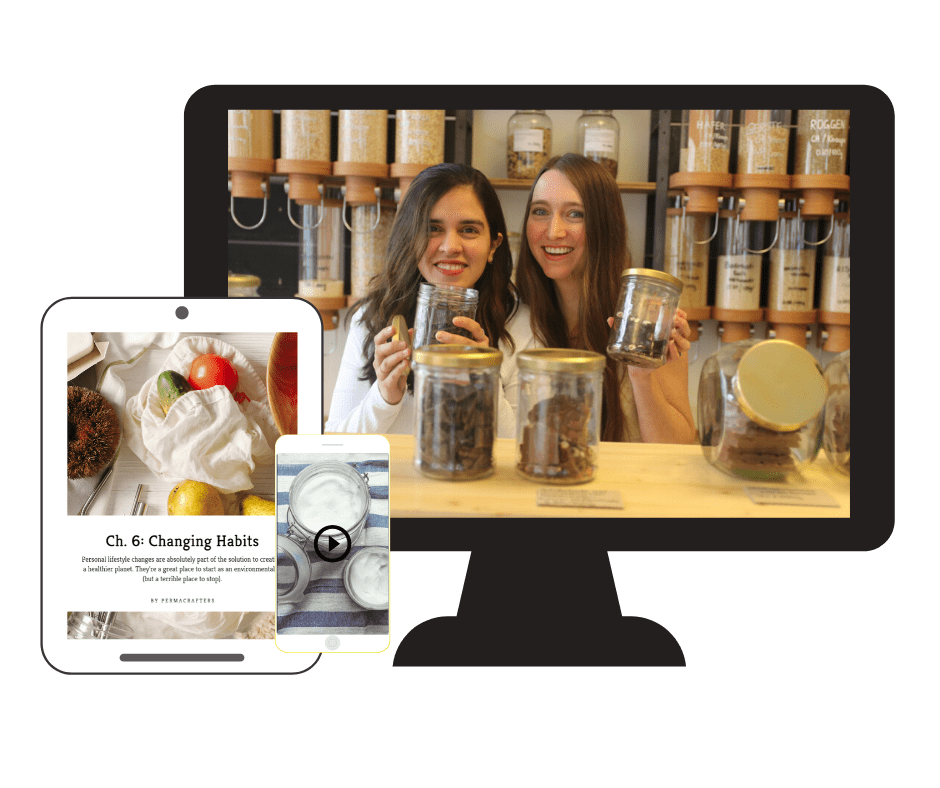
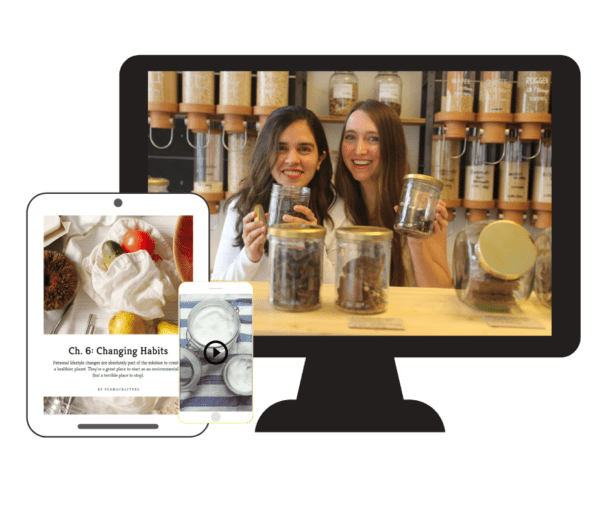
Yes!!!
Does it need to be “wild”. Would the grades in the back yard be the same (edible)?